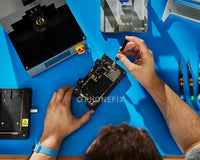Every car enthusiast loves speed, whether for track use, off-road adventures, or ideas of performance. But many modern cars have Electronic Control Units (ECUs) that limit the speed to factory set limits. These limiters are designed to keep the car within legal boundaries and prevent excessive speeds on public roads. Speed limiters not only protect the driver and passengers but also reduce the risk of accidents, particularly at high speeds.
While this makes sense for general traffic safety, it’s a limitation for those who drive on tracks, private test areas or in countries with fewer restrictions. That’s where speed limit removal becomes a valuable modification.
How Is a Speed Limiter Removed?
Removing a speed limiter involves reprogramming or altering the vehicle’s ECU with a professional ECU programmer, a complex process that should only be handled by experienced professionals. There are a few common ways to achieve this:
ECU Reprogramming/Remapping: This is the most prevalent method. Chip tuner connects to your vehicle’s OBD-II port and rewrites the ECU’s software to increase or eliminate the speed limit. However, such modifications may void the vehicle’s warranty. A Poorly done remapping also can disrupt fuel injection, ignition timing, and transmission shifting, leading to engine overheating, reduced fuel efficiency, or catastrophic failure.
Aftermarket ECU: Some vehicle owners may opt for a custom aftermarket ECU, which allows for more advanced tuning. These ECUs are designed for high-performance applications and can bypass factory-imposed speed restrictions. Installation, however, requires specialized knowledge and can be costly.
Custom Tuning: In some cases, speed limiters may be controlled by other modules in the vehicle beyond just the ECU. Custom tuning can target these additional modules and disable the speed limiter functionality.
Tampering with a speed limiter may violate local laws and regulations. In many countries, removing or disabling speed limiters could result in fines, penalties, and even the suspension of driving privileges. It’s essential to check the specific laws in your region before making such a modification.
In addition, vehicles are designed to operate safely within a certain speed range. If you remove the speed limiter, your vehicle may exceed the safe performance threshold. High-speed driving puts immense strain on various vehicle components, such as brakes, suspension, and tires. Without proper upgrades, removing the speed limiter could lead to loss of vehicle control, increased wear and tear, or even catastrophic failure.
While removing a speed limiter may sound appealing, it’s essential to consider the legal and safety consequences. Automakers and regulators don’t set speed limits to hold you back, they set them to keep you alive.
How to Remove a Vehicle Speed Limiter the Right Way










